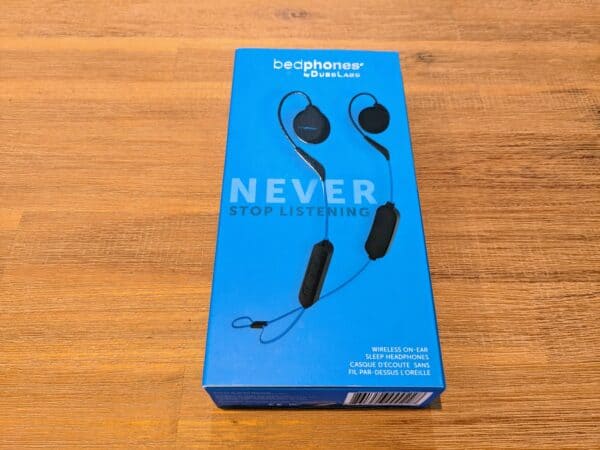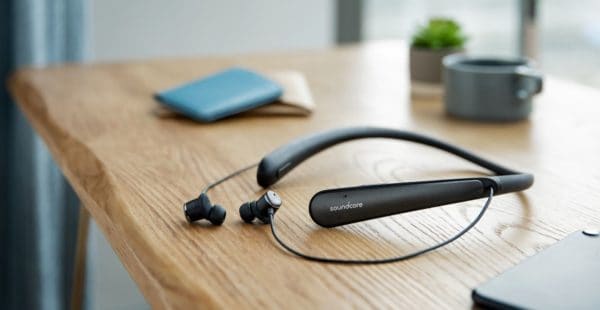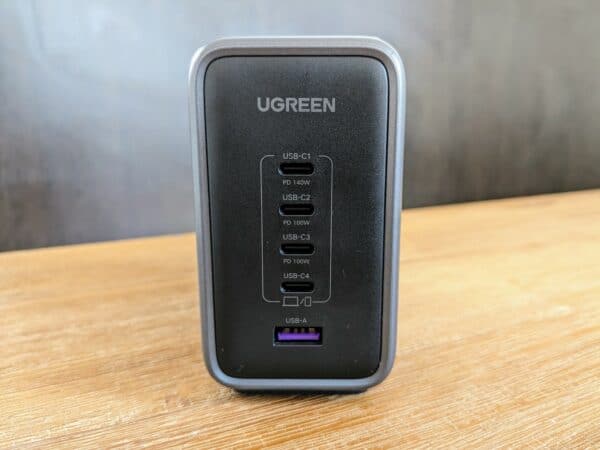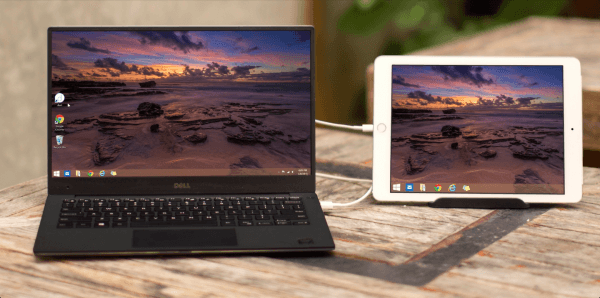The Best Headsets for Working From Home in 2023
We may earn a commission from purchases you make after clicking links on this site. Learn more.Whether you’re new to working from home or a seasoned pajama professional, having the right gear makes a huge difference. It starts with a good ergonomic work setup, which definitely includes “optional” accessories like a quality headset.
Using a good headset will improve your voice quality on Zoom meetings and phone calls by cutting out background noise from kids, pets, and traffic. It can also aid focus with the help of background music, and make that music sound better than what you’ll get from the cheap pair of earbuds that came with your phone.
Key factors to consider when choosing a headset for working from home are the connection type (wired or wireless), whether there’s any noise cancelling technology and how well it works, outgoing and incoming audio quality, and durability.
Because you could easily be using this headset for 8+ hours a day, it’s also important to choose something that’s comfortable to wear for long periods. That’s an often-overlooked factor, but based on our experience, a vital one.
Based on the factors described above, plus of course the costs involved, these are our current picks for the best headsets for working from home.
- Weight: 5.5 ounces
- Connection: Bluetooth 4.0
- Active Noise Cancelation? Yes
- Microphone: Noise-canceling, rigid stalk
- Battery life: Up to 12 hours
- Weight: 8.8 ounces
- Connection: Bluetooth 5.2, 3.5mm
- Active Noise Cancelation? Yes
- Microphone: Noise-suppressing, inbuilt
- Battery life: up to 30 hours
- Weight: 9 ounces
- Connection: 3.5mm
- Active Noise Cancelation? No
- Microphone: Noise-suppressing, flexible stalk
- Battery life: n/a
- Weight: 8.5 ounces
- Connection: Bluetooth 5.1, 3.5mm
- Active Noise Cancelation? Yes
- Microphone: Noise-suppressing, inbuilt
- Battery life: up to 24 hours
- Weight: 6 ounces
- Connection: USB, 3.5mm
- Active Noise Cancelation? No
- Microphone: Standard, rigid stalk
- Battery life: n/a
- Weight: 0.7 ounces
- Connection: Bluetooth 5.1
- Active Noise Cancelation? No
- Microphone: Noise-suppressing, rigid stalk
- Battery life: up to 14 hours
What to Look For
Before we start dissecting our headset choices, let’s discuss why we chose them, and the things you need to consider when making your buying decision.
Level of Environmental Noise
In general, we recommend an active noise-canceling headset. As the name implies, this feature actively eliminates unwanted noise from your environment, helping you stay focused on the task at hand.
For work purposes, really the only thing against these type of headsets is the fact that good ones can be really quite expensive. If you live alone and don’t have noisy neighbors, there’s probably no reason to pay extra to cancel noise that doesn’t exist.
If, on the other hand, you have small kids, live on a busy road, or have an active construction site next door, then getting a pair of noise-canceling headphones will be the most sensible business decision you ever made and the best thing you did for your mental health this year. Don’t think twice!
Comfort
Comfort is the hardest thing to scope out when researching any product online, but making sure your headset is comfortable really is important. We’re talking about work here, after all, which means that at least for some people, it will be on your head for hours and hours every day.
If you mess up this one, you’re in trouble: not even the fanciest features or the best sound quality will make up for an uncomfortable headset that you can’t handle wearing for more than a few minutes.
The best way to gauge this is to read, read, and reread customer reviews. Search for “comfort” in the reviews and pay close attention to the results: look for people who write how they’re wearing the headsets all day without issue.
Sound and Microphone Quality
Unless your work happens to be that of a music producer or DJ, chances are you’ll have music or podcasts on quietly in the background rather than paying close attention to the audio quality.
Even so, it’s worth getting something that’s at least acceptable to listen to, especially if it’s likely that you’ll use the same headset outside of work hours for listening to music, gaming, or watching movies. You want to be able to hear your co-workers clearly on that multi-hour Zoom meeting, right?
As for the microphone, unless you’re one of the few who works in total isolation, it’s vital to have a high-quality one built into your headset. You’ll need it for Zoom meetings and making and taking all kinds of calls, and when it’s not very good, that’s obvious to the person on the other end.
Just as it’s useful for noise cancelation to be built into the earbuds or cans, it’s equally important that it’s part of the microphone as well. Being able to suppress or eliminate background noise makes you sound far more professional on your calls, no matter what kind of audio mayhem is going on around you.
Connectivity
For most people, wireless headsets are preferable for one simple reason: you don’t need to worry about cables, letting you move around at will. Bluetooth is standard, and preferable for most people, since it lets you easily connect to both phones and computers and switch between them as needed.
If you decide to go for a wireless model, there are a few things to check, however: range, battery life, and charge time.
In terms of range, you don’t need to look for huge distances, but it is useful to be able to get a drink from the kitchen or go to the bathroom when you’re on an endless conference call. Assuming you’re not on video, of course!
Battery life also matters, especially if your job entails being on calls most of the day. Look for an “active” time of at least 10 hours, which covers most people for at least the duration of their work day. More is better, especially if you also plan to use your headset outside or for other non-work purposes.
Fast-charging is also important, especially when you realize you forgot to charge your headset ten minutes before a call. For the same reason, it is worth considering a headset with both wired and wireless connection options, so you can quickly plug in the cable if your battery runs flat.
Speaking of wired headsets, they usually connect via a standard 3.5mm (1/8″) audio cable. This is a tried and tested method, around for decades, and it simply works. Besides simplicity, its major benefit is the price: wired-only models are usually much cheaper.
Wired headsets tend to have better sound and microphone quality compared to wireless models in a similar price tier. They have zero latency as well, so there’s no lag between somebody’s lips moving on the screen and hearing them in your ears.
The biggest drawback is that cables not only tangle, but are the weakest point of the device: when you do inevitably trip on the cable, that’ll likely be the day you’re back looking for a new headset. Most phones these days also come without a headphone jack, so you’ll likely be restricted to computer-only use.
Durability
Because we’re talking specifically about the best headsets for working from home, the presumption is that you’ll use them indoors most of the time. That means they won’t be exposed to the weather, and even if they fall, they won’t land on concrete.
If you do plan to use them for other purposes, especially outdoors, then yes, factor durability into your decision. Look for a hard case, stronger materials, and more robust construction if that’s the case. Otherwise, for general home use, don’t overpay to get the toughest headset out there. There are better features to spend your money on.
Price
We always put it last in these guides, but let’s face it, cost is the most important criterion for many of us. Unless your company is paying, the price separates what we can afford from what we can’t, reality-checking our desires. Generally speaking, that’s a good thing, as it simplifies our choices.
While you shouldn’t spend a fortune on a headset, we’re talking about business use here, not a casual splurge. You’re looking for a headset that will help you stay focused and productive while you work, and improve the quality of your work calls. It’s a proper investment.
We spend half of our waking hours working, so spending a bit of money to ensure that time is as comfortable and productive as possible only makes sense. It’s worth stretching your budget to get the best model you can afford.
The same goes for any other type of home office equipment: monitor, mouse, keyboard, desk, chair, whatever. If you make the right decision, it’ll more than pay itself off in increased productivity.
Best for Calls: Plantronics Voyager Focus UC

When it comes to working from home, the Plantronics Voyager Focus UC headset has a lot going for it. Lightweight and comfortable even when worn for hours, it has excellent voice quality and provides up to 12 hours of active talk time per charge.
Designed for use with Zoom, Teams, and other remote-working tools, it’s aimed at professionals who spend a lot of time on calls. Because it’s a headphone-style headset with audio in both ears, though, it can easily do double duty for listening to music or casual gaming after work.
If you have kiddos running around or other noisy distractions, active noise cancelling (ANC) technology helps you focus, while noise-cancelling microphones reduce the amount of background sound that makes it through to your co-workers.
The springy headband has just the right amount of grip, keeping the padded earcups firmly in place without pinching or discomfort. That’s why you can wear them all day without wanting to rip them off your head, and a big part of what makes them the best headset for working from home.
Buy on AmazonBasic controls are built into the earcups: there’s a voice assistant button on one side, and music/volume buttons on the other. Noise cancelation can also be turned on and off here, cutting out low-end sounds while still keeping voices audible.
Other useful features including automatic pausing music playback when you remove the headset (and restarting again when you put it back on), a 100-foot Bluetooth range that lets you wander around while on a call, and an “HD Voice” mode that improves outbound audio quality.
The only real downside of this set is its durability. Several components are plastic, which can become brittle over time. You’re not paying a fortune for the Focus UC, but given the otherwise high-end nature of this headset, we’d perhaps have hoped for a better build quality.
Pros
- Comfortable for all-day wear
- Strong battery life
- Excellent voice quality
- Compatible with Microsoft Teams, Zoom and more
- Active noise cancelling (ANC)
Cons
- Durability could be better
Best for Mixed Use: Sony WH-1000XM5

Sony makes fantastic headphones, and the WH-1000XM5 is no exception. This is a high-end headset with exceptional sound quality, impressive noise cancelling, and seamless wireless operation, making it the best general-purpose headset for working from home.
The XM5 does an excellent job of keeping out unwanted noise, utilizing a processor specifically designed for noise cancellation. The headset uses eight small microphones built into the headphones themselves, rather than an extended boom-style microphone, but you still get crisp, clear phone calls (on both ends) and excellent audio quality.
Speaking of sound quality, it’s truly excellent. High-quality drivers combined with some of the best digital sound enhancing tech combine to provide a rich, immersive experience while listening to music. I thought the audio on an earlier model of these headphones was impressive enough, but the XM5’s are noticeably better.
Voice assist (Amazon Alexa or Google Assistant) is built in, and a unique speak-to-chat feature automatically lowers headset volume when you start talking, assuming you’re not on a call. The idea is to allow you to have conversations with someone in the room without removing your headphones. Necessary? No. Cool? Yes!
Dual-device multipoint pairing allows you to switch seamlessly between your computer and phone or other Bluetooth-enabled devices. The headphones are smart enough to automatically switch from (for example) your laptop to your phone when a call comes in, an especially useful feature.
The headset also comes with a 3.5mm cable for wired connections, although this is only for listening: the microphone doesn’t work unless you’re in Bluetooth mode.
The XM5 offers impressive battery life, lasting up to 30 hours of wireless use between charges. That’s enough to get you through a good chunk of the work week, even if you’re using the headset all day.
It detects whether you’re wearing it or not, powering itself off automatically to save battery while not in use. When you do run low on juice, USB C fast-charging gives around three hours of use from as little as three minutes on the charger.
The only real downside of XM5 is the aforementioned microphone issue when using the wired connection. If you only plan to use it wirelessly, of course, it won’t bother you in the slightest, and you can also buy replacement cables with inline microphones to work around the problem. The headset is also somewhat pricey, but you get what you pay for here.
If you spend many hours a day on calls in quiet rooms, the lightweight nature and lower cost of the Focus UC (above) makes it a better option. If you’re after something appropriate for a wider range of uses, however, and have a higher budget to go with it, the XM5 is the way to go.
Pros
- Excellent active noise cancelling
- Impressive sound quality
- Very comfortable
- Up to 30 hour battery life
- Pauses playback when headphones are removed
- Can be used wireless or (partially) wired
Cons
- Pricey
- Microphone doesn’t work when using the wired connection
Best Wired Model: Logitech G PRO X

While the Logitech G PRO X is marketed as a gaming headset, many of the factors that gamers look for also apply to remote workers: comfort, audio quality, and a good microphone. It’s also reasonably priced, making it an ideal choice for those looking to save a bit of cash.
Note, however, this is a wired-only headset: it has to be connected via the included 3.5mm cables, either directly into your device or via the bundled USB soundcard. There is a separate wireless model, but it’s around twice the price, so we’d opt for the XM5 instead if Bluetooth is a must.
The G PRO X has impressive audio quality for the price, bolstered by DTS 7.1 surround sound and high-quality sound software that lets you customize your audio settings to an impressive degree.
The removable microphone includes a noise reducer, compressor, and limiter for cleaner, professional-sounding voice communications. This means these headphones are well suited to just about any computer activity, switching seamlessly from work meetings to after-hours gaming sessions.
As good as the G PRO X is, there are a couple of downsides worth mentioning. In order to fully utilize the advanced features, you must use both the free G Hub software and that bundled sound card. This requires a bit of clutter software and hardware wise, and is particularly relevant for laptop users with limited USB slots.
Separately, there are occasional hardware issues with the removable microphone, but that’s less of a concern given there’s a backup inline microphone as well.
Pros
- Comfortable and durable
- Excellent, detachable mic
- Impressive sound quality
- Highly customizable
- DTS 7.1 surround sound
Cons
- Some reported issues with microphone hardware
- Wired-only
- Needs both G Hub software (free) and USB external sound card (included) to access all features
Most Comfortable: Bose QuietComfort 45

If comfort is your priority, the Bose QuietComfort 45 headset is a great choice. In many ways, it’s similar to our top pick: it’s priced similarly, offers wired and wireless connectivity, and has excellent sound quality and noise cancellation. The ~24 hour max battery life is slightly less than the XM5, but still impressive.
What sets the Bose model apart is comfort. Signature large cushions rest comfortably around the ears rather than on top of them, which reduces ear rubbing and discomfort. The Bose QC 45’s are designed to have “minimal clamping force,” which essentially means they don’t feel as tight or constricting on your ears as some competing models.
It’s not just about comfort, however. The QC 45’s offer exceptional sound quality with high-fidelity audio and remarkable depth and fullness, while active equalization ensures music sounds amazing at any volume level.
Bose has arguably the best noise-cancelling technology of any headphone maker, ensuring a focused, productive work environment for office hours, and blissful distraction-free relaxation when you’re done for the day.
To customize features, you must use the Bose Music app. Apart from this, the only real downside is the price point: like the Sony option, this headset ain’t cheap.
Pros
- Very comfortable design
- Large cushions sit around the ears, not on them
- Connects via USB or Bluetooth
- Advanced noise cancellation
- Excellent audio quality
- Relatively lightweight for their size
Cons
- Feature customization requires Bose Music app
- Pricey
Best on a Budget: Jabra Evolve 40

If you can talk your employer into buying you a headset, then absolutely splurge for the above Sony or Bose models. When you’re paying out of pocket, however, you may want to opt for a more budget-friendly model. In that case, go for the Jabra Evolve 40.
The Evolve 40 strikes a good balance between quality and price. While it’s not as comfortable as our top picks, the lightweight frame is still easy to wear for hours. Likewise, while it doesn’t have the same sound quality as the XM5 or QC45, it’s still leaps and bounds ahead of basic headsets, at a reasonable price point.
This wired headset connects via either USB or 3.5mm jack, so it can be used with most devices. It’s optimized for use with Microsoft Teams and other popular software like Cisco and Skype for Business. It looks and feels like an office headset, right down to the “busy” light to let others know you’re on a call.
One downside worth mentioning, however, is the lack of active noise cancelling (ANC) technology for either the microphone or the drivers. This means that audio may include some background noise for both you and anyone you’re talking to, so the Evolve 40 works best in relatively quiet environments.
If you really don’t want to spend a lot on a basic headset for working from home, the Logitech H390 is probably the best truly cheap option. Comfort and durability suffer at this price point, but it’s good enough to get the job done, and even has some basic microphone noise cancellation.
Pros
- Optimized for use with MS Teams
- Connects via USB or 3.5mm jack
- Lightweight for extra comfort
- Budget-friendly
Cons
- No active noise cancellation, so some background noise may come through on the microphone
Best Single-Ear Headset: BlueParrott M300-XT

All of our picks so far have been dual-ear, headphone-style headsets. We find that for most home workers, having audio in both ears is useful for cutting out background noise and having a better experience when listening to music.
With that said, some people prefer single-ear headsets that allow you to remain more aware of your surroundings while connected. If this sounds like you, the BlueParrot M300-XT headset is the way to go.
The M300-XT is compact, lightweight, and versatile. You can use it at the home office, in the actual office, or on the road. A battery life of up to 14 hours will keep you powered through roughly two workdays before needing to dig out the charger.
Bluetooth 5.1 support ensures stable, long-range connection to a wide range of devices. The M300-XT is also surprisingly durable, with IP54-rated resistance to water and dust.
This model has excellent background noise suppression and a quality microphone, both of which dramatically improve the quality of outgoing audio. Of course, the single-ear design means that you’ll notice more background noise in your own environment, and it wouldn’t be our pick for listening to music for the same reason.
Pros
- Mic has excellent background noise suppression
- Up to 14 hour battery life
- Quality incoming and outgoing audio
- IP54-rated
- Up to 300ft range
Cons
- Single-ear design isn’t ideal for listening to music
Main image via Halfpoint/Shutterstock.com, product images via Amazon









Have you considered the Poly Voyager UC 2? I am curious about it as I currently have two Voyager UC headsets kicking around the house and they are still working great after five years of everyday use.